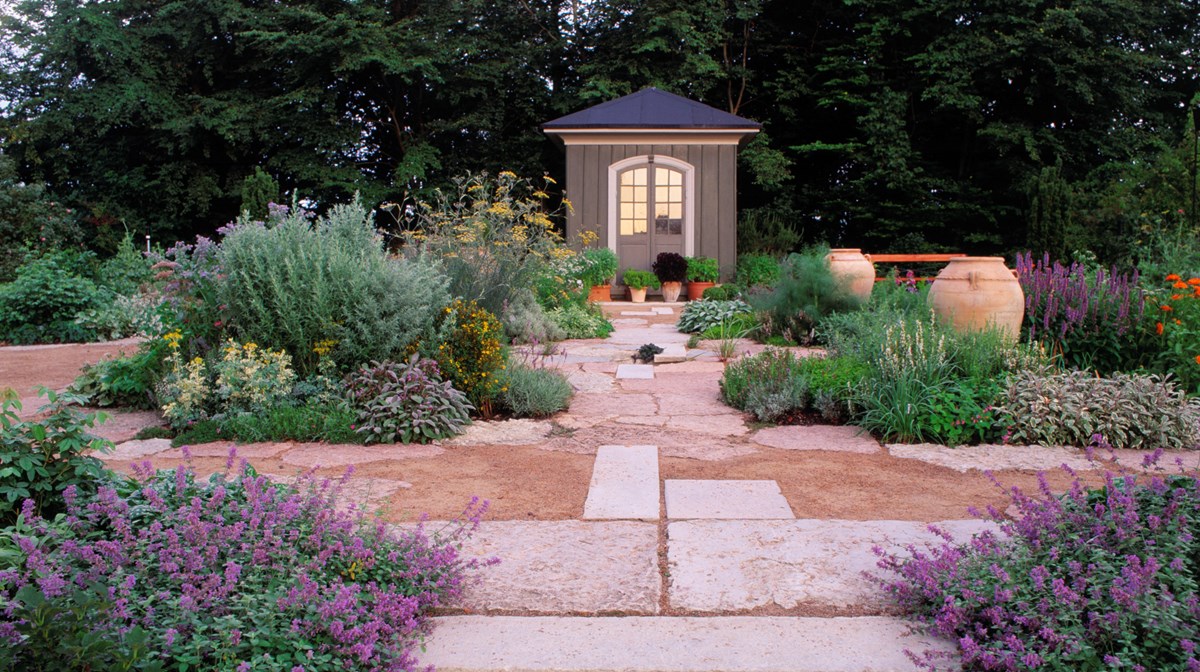Herb garden

The Herb Garden is a good place for studying aromatic plants and medicinal herbs or just for relaxing peacefully. The use of plants as medicines is an ancient tradition exist-ing in all cultures. The oldest preserved book about herbs is about 5,000 years old and is from China. A herb garden was the pharmacy of the olden days and it was only much later that people began using herbs to season their food.
Nature’s Pharmacy
There are extremely active substances in many herbs and these are put to good use by the pharmaceutical industry. Garden sage (Salvia officinalis) is for example effective as an antiseptic and fungicidal agent. The dark green leaves of the sweet violet (Viola odorata) contain painkilling salicyclic acid compounds. One should always be careful when combining herbal substances with any kind of medication.
Please be aware that some of the plants in the Herb Garden are poisonous, so we warn you not to try tasting any of them. One example is aconite (Aconitum), used in the olden days in ointments to soothe pain. It is not in use any longer since it is considered far too poisonous.
Attractions
The purple coneflower (Echinacea purpurea) comes from North America where the indigenous peoples used it frequently. Scientific studies have shown that it stimulates the immune system and suppresses inflammation. Nowadays there are many different Echinacea products on the market.
Garden angelica (Angelica archangelica) grows wild in the fells and on beaches along the coast. It has been cultivated in Scandinavia since the time of the Vikings. The Sami have always used garden angelica to prevent infections, in its fresh form and also preserved in reindeer milk.
The summerhouse is from the 1700s. City architect Bernhard Carlberg designed it for his country estate, Kärralund. Nowadays the Röhsska Museum owns and maintains it and the lovely murals on the inside.






